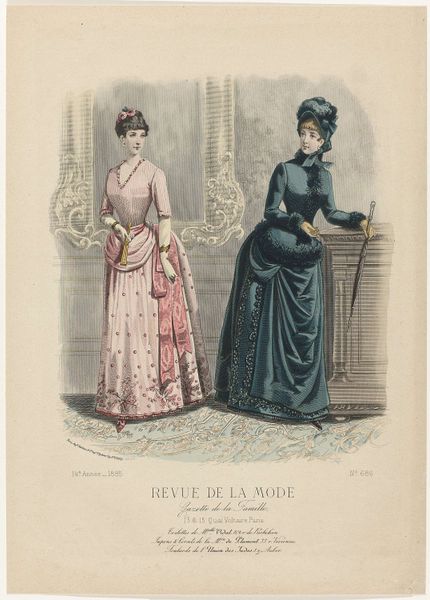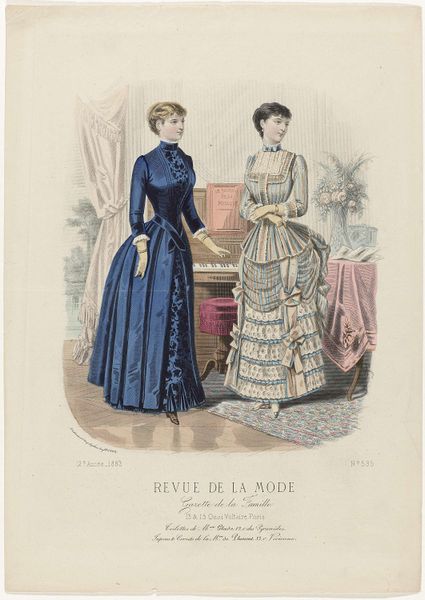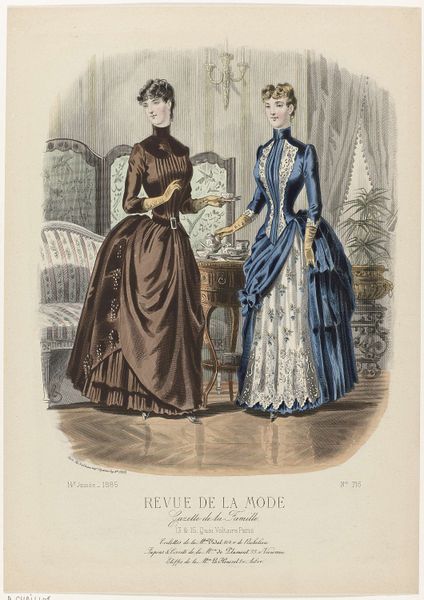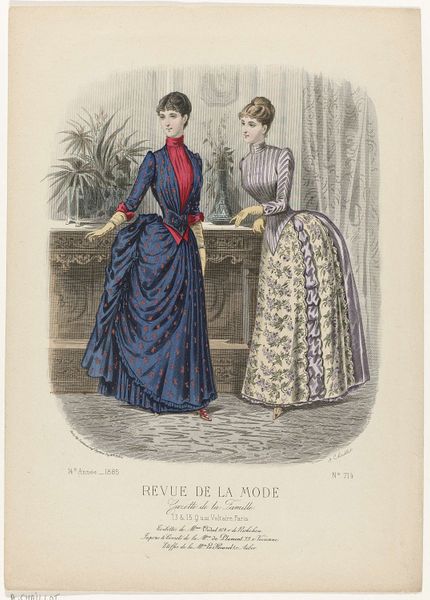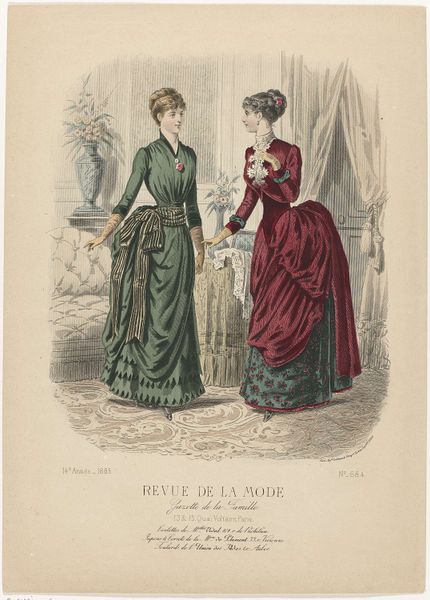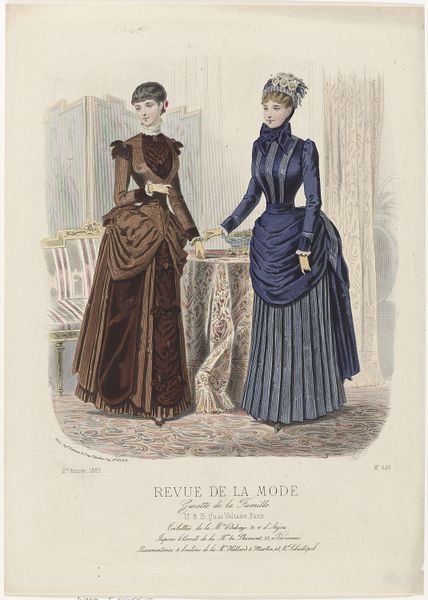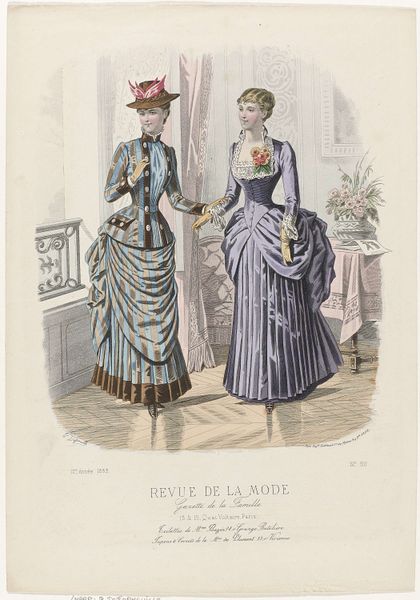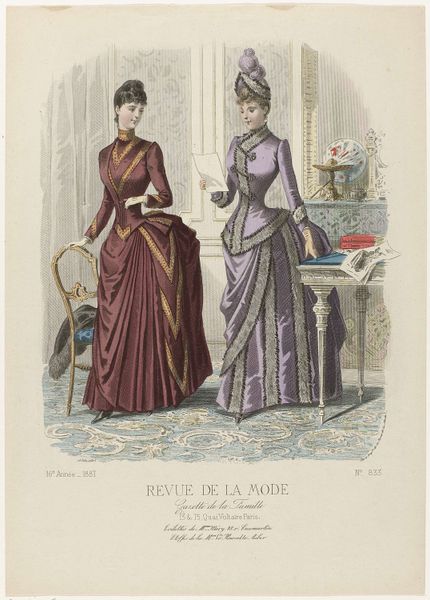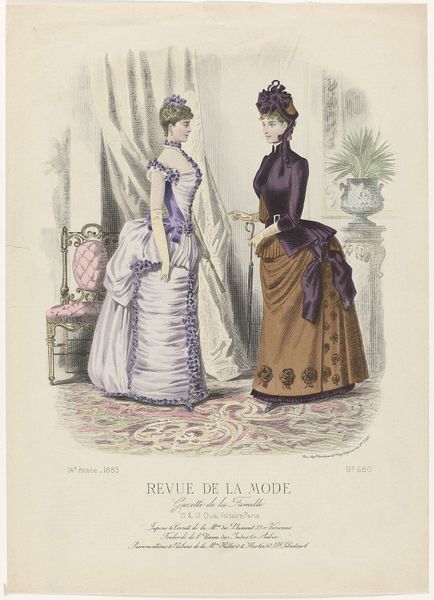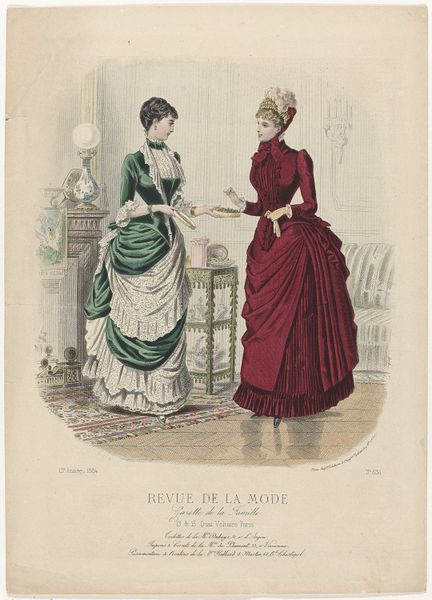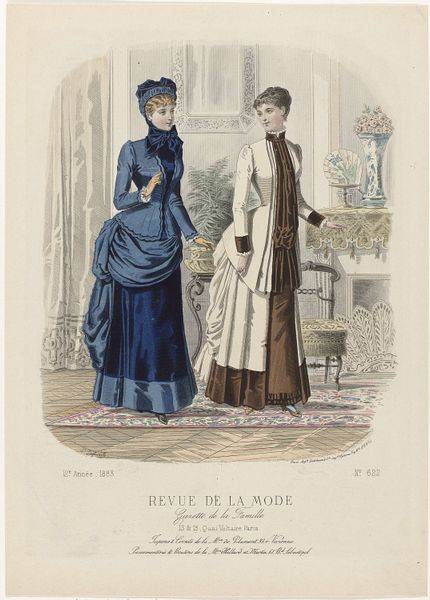
Revue de la Mode, Gazette de la Famille, 16 août 1885, 14e Année, No. 711 : Toilettes de Mme Pelletier-Vidal (...) 1885
0:00
0:00
painting, print, ink
#
portrait
#
art-nouveau
#
painting
# print
#
historical fashion
#
ink
#
19th century
#
genre-painting
#
dress
#
watercolor
Dimensions: height 375 mm, width 268 mm
Copyright: Rijks Museum: Open Domain
Curator: Here we have a print titled "Revue de la Mode, Gazette de la Famille" from August 16th, 1885. The publication spotlighted clothing designs by Mme Pelletier-Vidal, among others, printed by A. Chaillot. Editor: What strikes me immediately is the duality represented; two women, different dress styles, yet there’s a unifying sense of the late 19th-century ideal. One gown is adorned with soft curves and frills, in sky blue. The other, in a restrained brown, suggests perhaps a contrasting symbol set. Curator: Let’s consider the materials and production. This likely involved woodblock printing combined with hand-coloring techniques, signifying a transitional phase between mass production and artisanal craft. Think of the social implications – readily accessible fashion disseminated to a growing consumer class. Editor: Indeed, but look closer at the floral motifs. The rose, centrally placed on the darker dress, has traditionally been associated with beauty and love. It is boldly contrasted with a larger and more opulent bow, in the second brighter dress, symbolizing innocence or virginity in religious symbolism. What's being conveyed here about women in society at the time? Curator: That is a very perceptive reading. I lean towards thinking of this from the industrial standpoint – examining textile mills and the availability of new dyes shaping visual trends. What meanings did those new consumer options offer for women and their self-presentation? Editor: The choice of blue certainly echoes its long art historical association with virtue, and status—from antiquity, think of ultramarine pigment made from precious lapis lazuli. Both dresses share a similar hour glass shape, underscoring idealised womanhood. Curator: Consider, too, the format of a fashion magazine itself. How did the emerging magazine industry facilitate the spread of stylistic ideals but simultaneously generate new forms of consumerist desires and anxieties about keeping up with trends? Editor: This piece offers an elegant visual encoding of Victorian era society in flux. A moment when traditional iconography was used to legitimize new styles. Curator: It is a window into the complexities of both industrialization and the enduring power of symbolic visual language. Editor: A fashion plate which preserves stories both on and beneath its surface, so to speak.
Comments
No comments
Be the first to comment and join the conversation on the ultimate creative platform.
